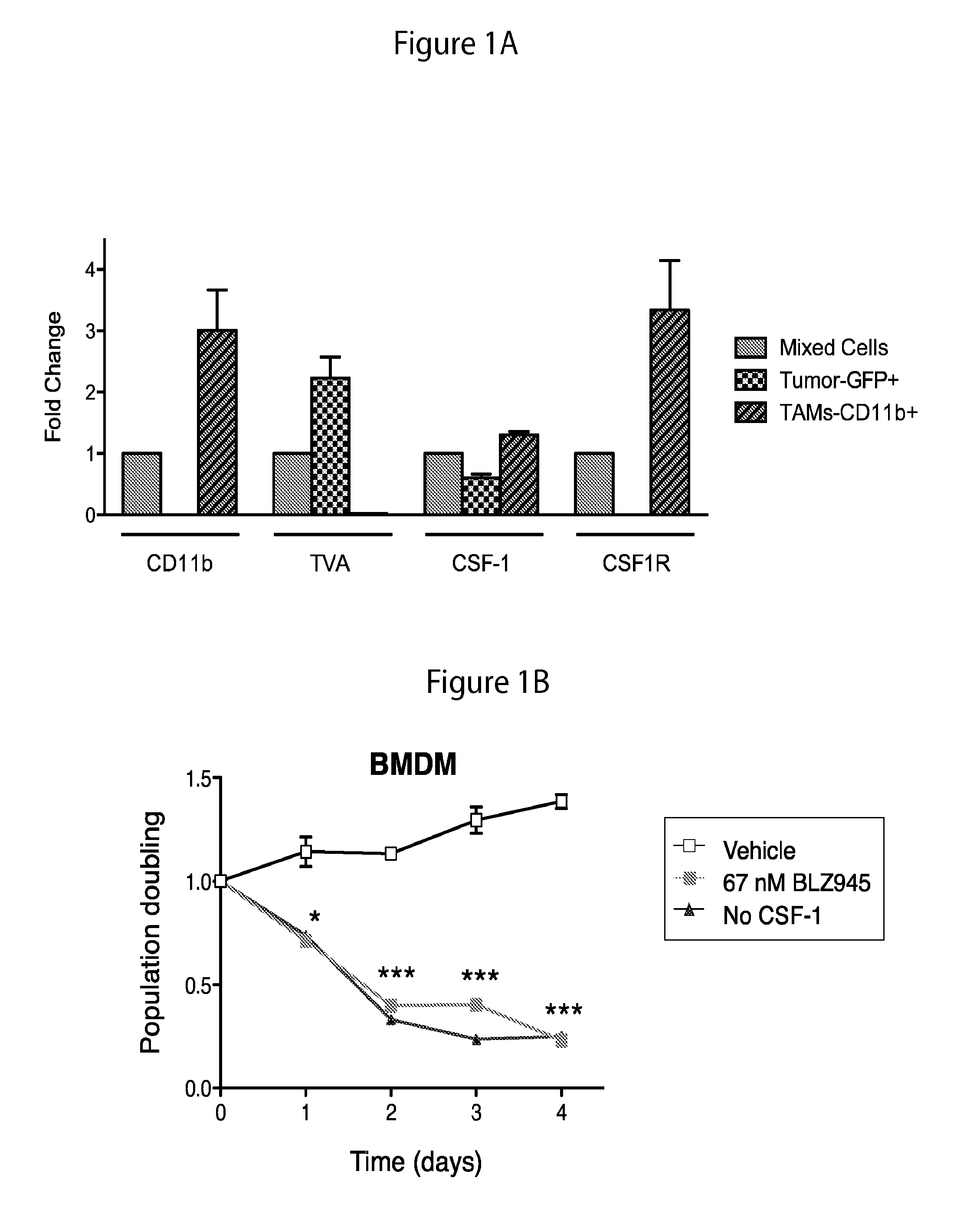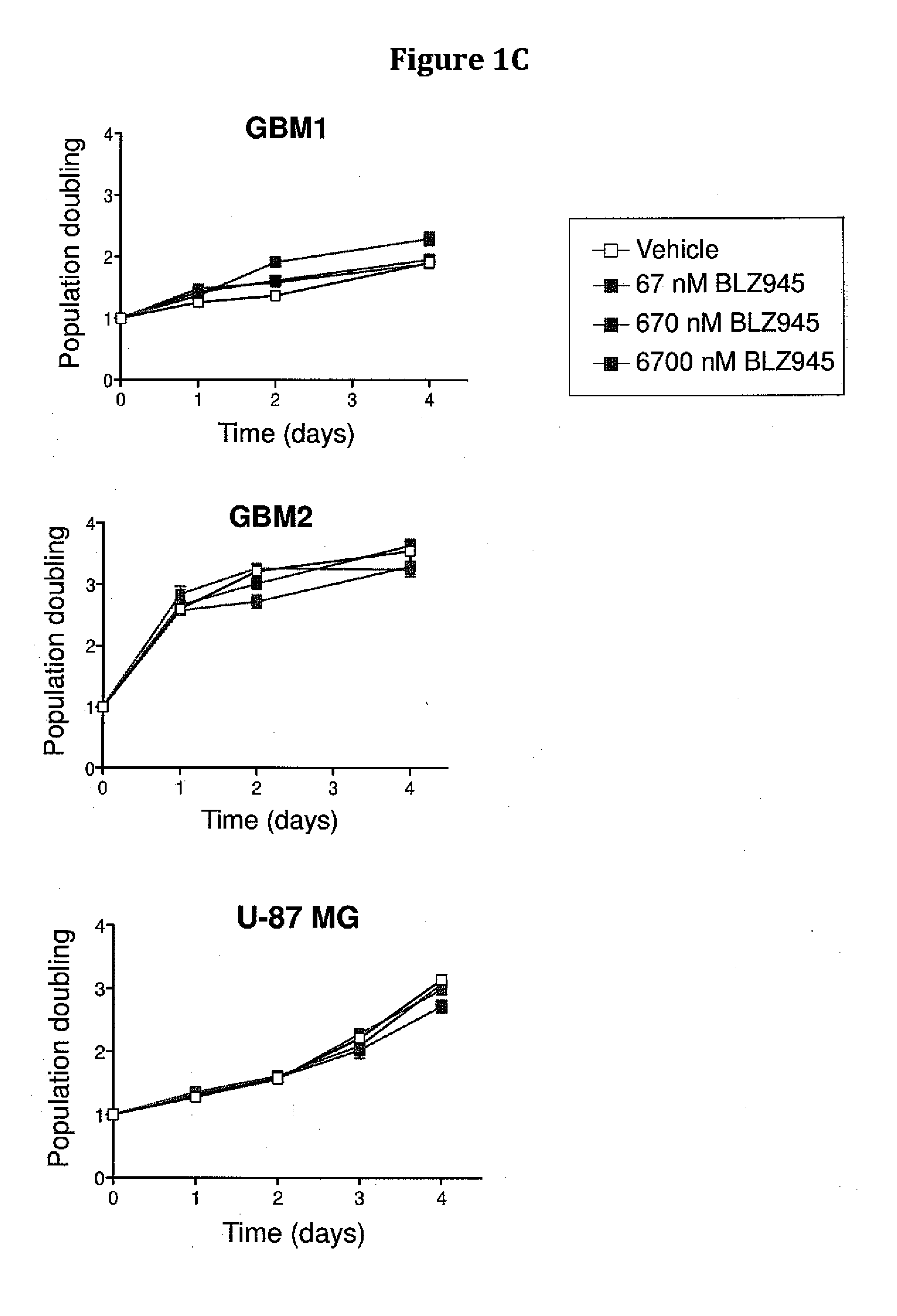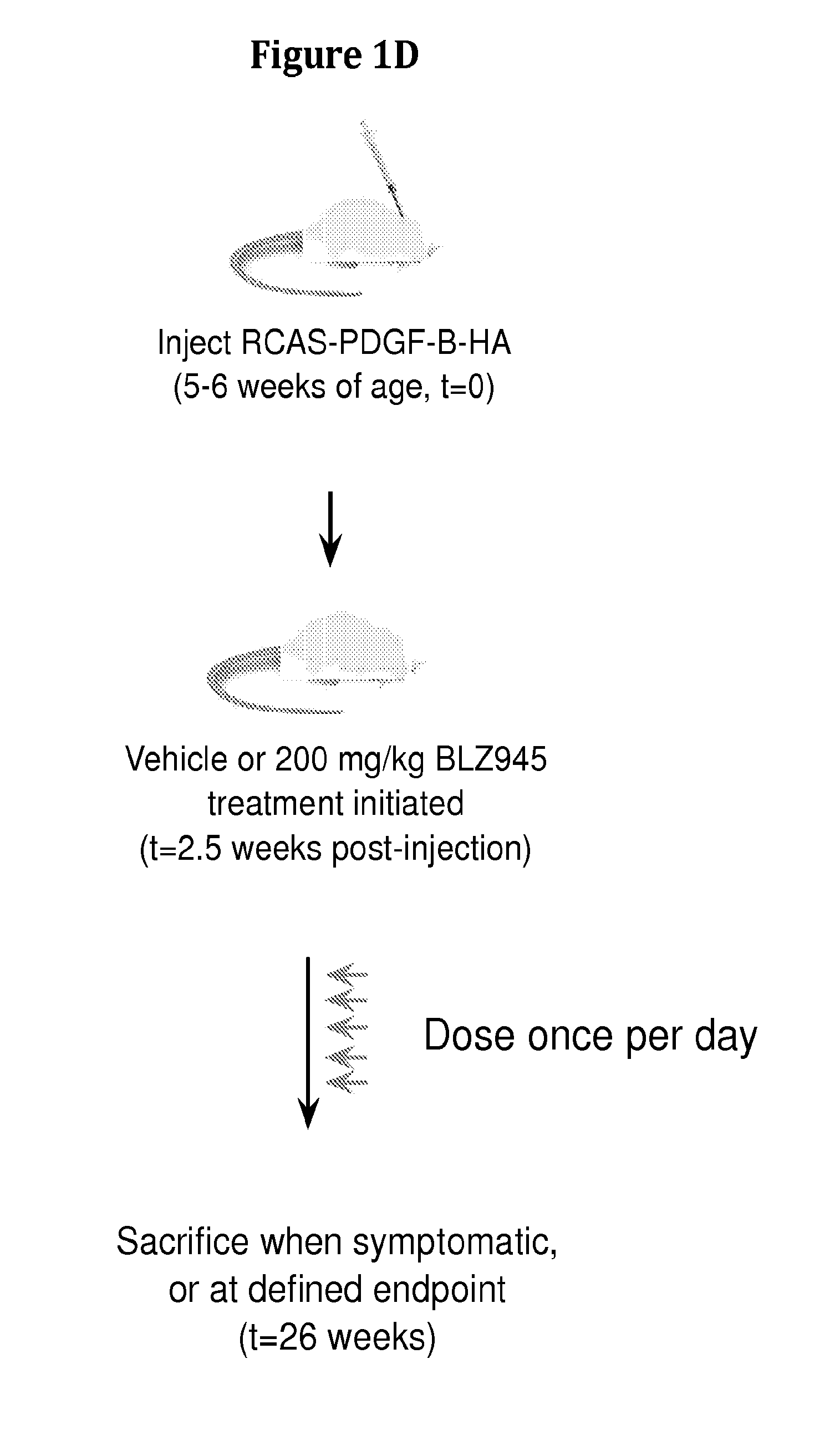Inhibition of colony stimulating factor-1 receptor signaling for the treatment of brain cancer
a colony stimulating factor and receptor technology, applied in the field of brain cancer treatment, can solve the problems of impaired tumor-promoting functions, decrease of alternatively activated/m2 macrophage polarization markers, etc., and achieve the effects of halting tumor growth, reducing tumor volume, and reducing tumor volum
- Summary
- Abstract
- Description
- Claims
- Application Information
AI Technical Summary
Benefits of technology
Problems solved by technology
Method used
Image
Examples
example 1
Materials and Methods
Mice
[0072]All animal studies were approved by the Institutional Animal Care and Use Committee of Memorial Sloan-Kettering Cancer Center. The Nestin-Tv-a;Ink4a / Arf− / − mouse model (mixed strain background) has been previously described (1, 2). Wild-type (WT) C57BL / 6 mice and β-actin-GFP (C57BL / 6) mice (3) were purchased from Charles River Laboratories and Jackson Laboratories respectively.
Intracranial Injections
[0073]The initiation of tumors with RCAS-PDGF-B-HA in adult mice has been previously described (4, 5). Briefly, mice were fully anesthetized with 10 mg / ml ketamine / 1 mg / ml xylazine and were subcutaneously injected with 50 μl of the local anesthetic 0.25% bupivacaine at the surgical site. Mice were intracranially injected with 1 μl containing 2×105 DF-1:RCAS-PDGF-B-HA cells between 5-6 weeks of age using a fixed stereotactic apparatus (Stoelting). Injections were made to the right frontal cortex, approximately 1.5 mm lateral and 1 mm caudal from bregma, and ...
example 2
CSF-1R Inhibition Alters Macrophage Polarization And Blocks Gliomagenesis
Mouse Model of Gliomagenesis
[0110]The experiments described below used the RCAS-PDGF-B / Nestin-Tv-a;Ink4a / Arf− / − mouse model of gliomagenesis (5, 6), hereafter referred to as PDGF-driven gliomas (PDG). This model is ideal for preclinical studies as it recapitulates all pathological features of human GBM in an immunocompetent setting.
[0111]It was first investigated if PDG tumors showed increased macrophage accumulation as reported in human gliomas. Comparison of normal brain versus GBM via flow cytometry demonstrated elevated CD11b+ myeloid cells / macrophages, representing the vast majority of leukocytes (FIG. 5). These data were confirmed by immunostaining of tissue sections for different macrophage markers including CD68 and Iba1. Similarly, mRNA expression data from whole tumors revealed increased Cd68, Csf-1 and Csf-1r. Expression analysis of FACS-purified tumor cells and CD11b+Gr-1− macrophages from gliomas s...
PUM
| Property | Measurement | Unit |
|---|---|---|
| volume | aaaaa | aaaaa |
| volume | aaaaa | aaaaa |
| time | aaaaa | aaaaa |
Abstract
Description
Claims
Application Information
 Login to View More
Login to View More - R&D
- Intellectual Property
- Life Sciences
- Materials
- Tech Scout
- Unparalleled Data Quality
- Higher Quality Content
- 60% Fewer Hallucinations
Browse by: Latest US Patents, China's latest patents, Technical Efficacy Thesaurus, Application Domain, Technology Topic, Popular Technical Reports.
© 2025 PatSnap. All rights reserved.Legal|Privacy policy|Modern Slavery Act Transparency Statement|Sitemap|About US| Contact US: help@patsnap.com



